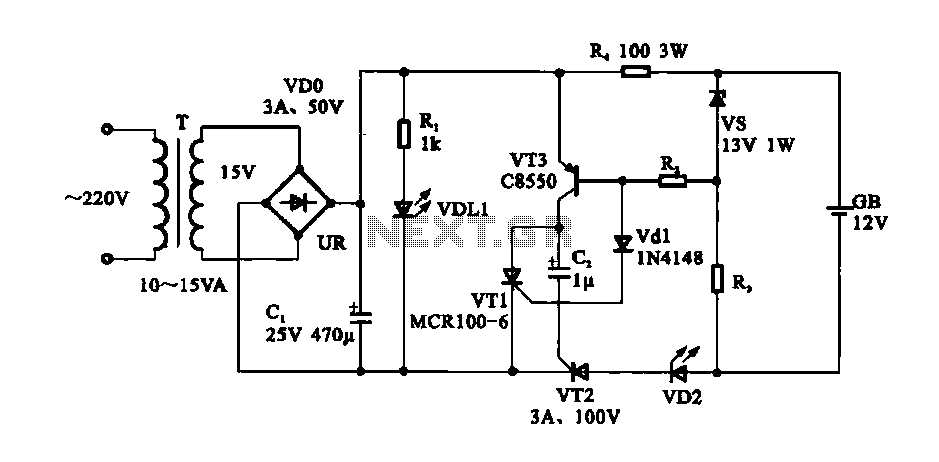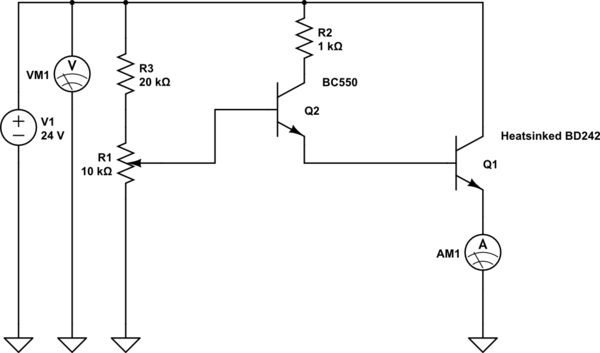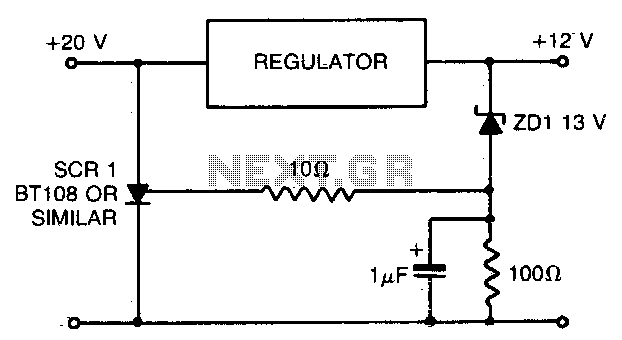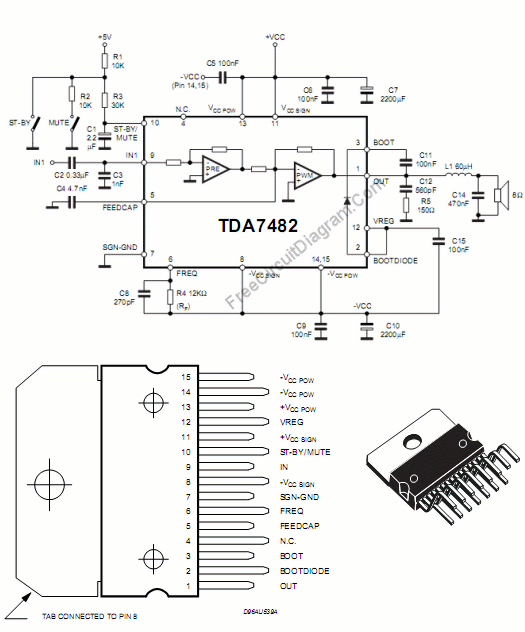
Variable Power Supply
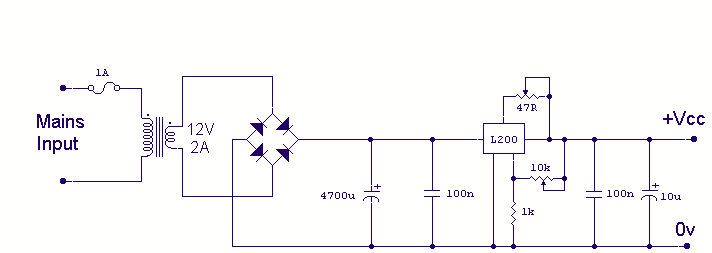
Using the versatile L200 voltage regulator, this power supply has independent voltage and current limits. The mains transformer has a 12-volt, 2 amp rated secondary, the primary winding should equal the electricity supply in your country, which is 240V here in the UK. The 10k control adjusts voltage output from about 3 to 15 volts, and the 47 ohm control is the current limit. This is 10mA minimum and 2 amp maximum.
The circuit utilizes the L200 voltage regulator, which is designed to provide a stable output voltage while allowing for variable adjustments within a specified range. The L200 is capable of delivering an output voltage from approximately 3V to 15V, making it suitable for a wide variety of applications. The configuration features a transformer that steps down the mains voltage to a secondary voltage of 12V AC, rated at 2A. The primary of the transformer is connected to the mains supply, which in the UK is typically 240V AC.
The output from the transformer is rectified using a bridge rectifier to convert the AC voltage to DC. Following the rectification, smoothing capacitors are employed to filter the output, ensuring a stable DC voltage that the L200 can regulate effectively. The voltage control is achieved through a 10k potentiometer, which allows the user to adjust the output voltage within the specified range. This potentiometer is connected to the feedback pin of the L200, enabling fine control over the output voltage.
In addition to voltage regulation, the circuit also incorporates a current limiting feature, which is crucial for protecting both the power supply and the connected load. A 47-ohm potentiometer is used to set the current limit, which can be adjusted to provide a minimum of 10mA and a maximum of 2A. This feature is particularly useful in applications where the load may vary, ensuring that the current does not exceed safe limits.
Overall, this power supply design provides a reliable and adjustable voltage and current source suitable for various electronic projects and testing applications.Using the versatile L200 voltage regulator, this power supply has independent voltage and current limits. The mains transformer has a 12volt, 2 amp rated secondary, the primary winding should equal the electricity supply in your country, which is 240V here in the UK.
The 10k control is adjusts voltage output from about 3 to 15 volts, and the 47 ohm control is the current limit. This is 10mA minimum and 2 amp maximum. 🔗 External reference
The circuit utilizes the L200 voltage regulator, which is designed to provide a stable output voltage while allowing for variable adjustments within a specified range. The L200 is capable of delivering an output voltage from approximately 3V to 15V, making it suitable for a wide variety of applications. The configuration features a transformer that steps down the mains voltage to a secondary voltage of 12V AC, rated at 2A. The primary of the transformer is connected to the mains supply, which in the UK is typically 240V AC.
The output from the transformer is rectified using a bridge rectifier to convert the AC voltage to DC. Following the rectification, smoothing capacitors are employed to filter the output, ensuring a stable DC voltage that the L200 can regulate effectively. The voltage control is achieved through a 10k potentiometer, which allows the user to adjust the output voltage within the specified range. This potentiometer is connected to the feedback pin of the L200, enabling fine control over the output voltage.
In addition to voltage regulation, the circuit also incorporates a current limiting feature, which is crucial for protecting both the power supply and the connected load. A 47-ohm potentiometer is used to set the current limit, which can be adjusted to provide a minimum of 10mA and a maximum of 2A. This feature is particularly useful in applications where the load may vary, ensuring that the current does not exceed safe limits.
Overall, this power supply design provides a reliable and adjustable voltage and current source suitable for various electronic projects and testing applications.Using the versatile L200 voltage regulator, this power supply has independent voltage and current limits. The mains transformer has a 12volt, 2 amp rated secondary, the primary winding should equal the electricity supply in your country, which is 240V here in the UK.
The 10k control is adjusts voltage output from about 3 to 15 volts, and the 47 ohm control is the current limit. This is 10mA minimum and 2 amp maximum. 🔗 External reference
